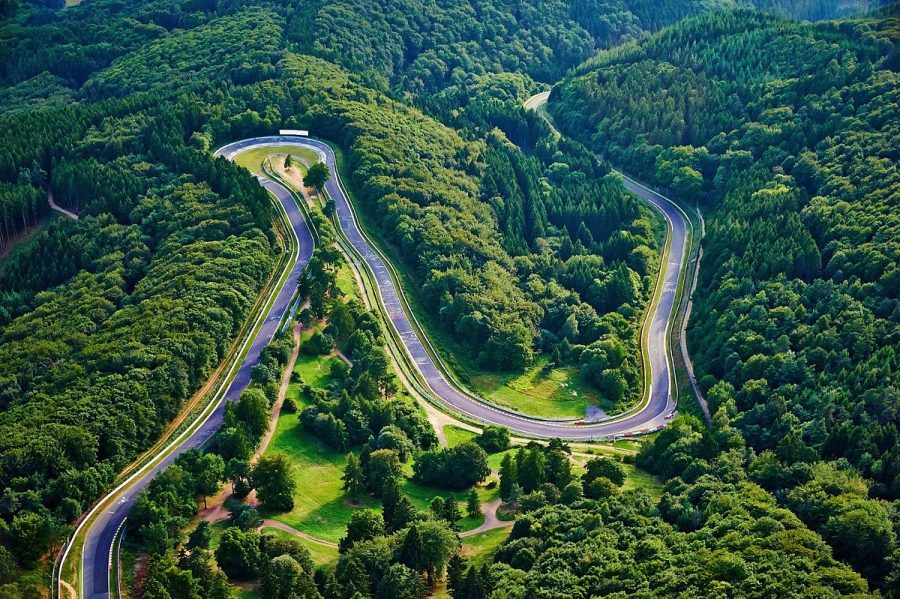Formula 1’s Top Five Most Unusual Circuits
May 9, 2023
Number 5: Nürburgring Nordschleife
The Nürburgring is a legendary auto racing circuit. Located in Nurburg, Germany, it is actually a part of the Autobahn, meaning anyone can show up and drive it whenever they want and in whatever car they want, after paying a small fee, of course. In recent years, with the continuous development of racecars, the 14.1- mile-long Nordschleife section has been used less and less for racing and more for vehicle testing, with the racing being moved to the considerably shorter Nürburgring GP-Strecke circuit, located just south of the main track. 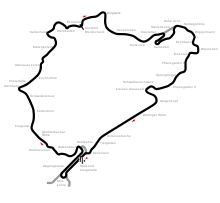
However, it has not always been this way. During the first years of F1, (1950-1976, excluding 1955, 1959, 1960, and 1970, when the racing was held at the now-defunct Nürburgring Südschleife) as well as a few years before the founding of F1, (1927-1939, excluding 1930 and 1933) the twisty, narrow, and lengthy Nordschleife hosted a Formula 1 Grand Prix.
At the last of these Grands Prix, in 1976, 3-time F1 world champion Niki Lauda had his now-infamous crash, in which his car bounced off of a barrier before bursting into flames, where he was then trapped for 55 seconds and then hospitalized for six weeks. Ironically, Lauda had originally encouraged his fellow drivers to boycott the race, but to no avail. He was badly scarred, but made a full recovery.
Number 4: Caesar’s Palace Grand Prix Circuit
At a first glance, the Caesar’s Palace Grand Prix Circuit looks normal enough, but it is the location of the track that  makes it stand out: the parking lot of the famous Las Vegas hotel and casino, Caesar’s Palace. Only one F1 Grand Prix was held here in 1981, and was not renewed for another race due to drivers complaining of the track’s boring and repetitive layout as well as the scorching desert heat, which just worsened the already stifling conditions in the cockpit of the racecar. Additionally, American fans of racing had mostly not heard of F1 at the time, leading to a low ticket sales on the day of the race. The Grand Prix was then quickly and quietly cut from the schedule the following year. In 2022, Formula 1 announced a return to Las Vegas for 2023, but on a new street circuit through the famous Las Vegas Strip, not on the Caesar’s Palace circuit.
makes it stand out: the parking lot of the famous Las Vegas hotel and casino, Caesar’s Palace. Only one F1 Grand Prix was held here in 1981, and was not renewed for another race due to drivers complaining of the track’s boring and repetitive layout as well as the scorching desert heat, which just worsened the already stifling conditions in the cockpit of the racecar. Additionally, American fans of racing had mostly not heard of F1 at the time, leading to a low ticket sales on the day of the race. The Grand Prix was then quickly and quietly cut from the schedule the following year. In 2022, Formula 1 announced a return to Las Vegas for 2023, but on a new street circuit through the famous Las Vegas Strip, not on the Caesar’s Palace circuit.
Number 3: Zeltweg Airfield
Zeltweg Airfield is a former air base and racing circuit located in Zeltweg, Austria, and hosted one Grand Prix in 1964.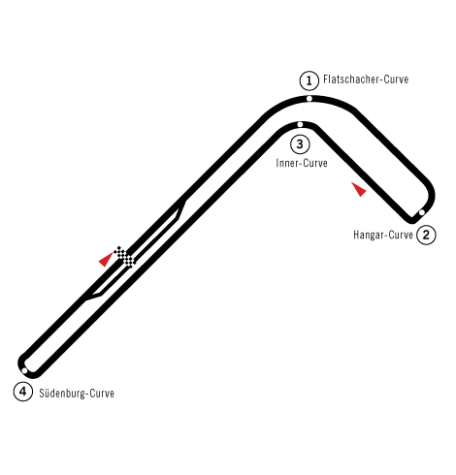 The track’s unexciting layout puts it at third on this list. There were only four corners within the racing layout in the track’s heyday, and its short distance led to a whopping 105 laps being required to fulfill F1’s rule of 190-mile-Grands Prix, which was actually exceeded by about nine laps. The tarmac on the course, designed for aircraft, was damaging to the cars, which were accustomed to smoother surfaces. This resulted in eleven of the twenty drivers retiring, or withdrawing, from the race. The track hosted its last race in 1969, but has hosted the AirPower airshow since 1997.
The track’s unexciting layout puts it at third on this list. There were only four corners within the racing layout in the track’s heyday, and its short distance led to a whopping 105 laps being required to fulfill F1’s rule of 190-mile-Grands Prix, which was actually exceeded by about nine laps. The tarmac on the course, designed for aircraft, was damaging to the cars, which were accustomed to smoother surfaces. This resulted in eleven of the twenty drivers retiring, or withdrawing, from the race. The track hosted its last race in 1969, but has hosted the AirPower airshow since 1997.
Number 2: Pescara Circuit
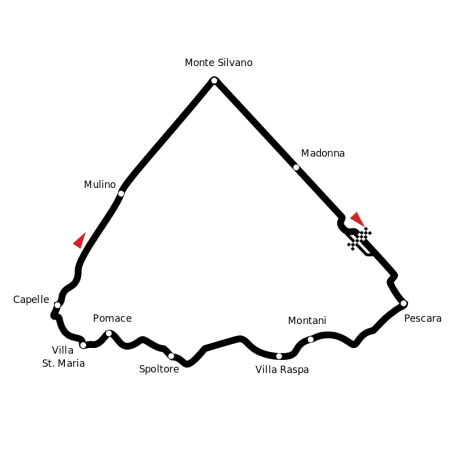 In 1957, the organizers of both the Dutch and Belgian Grands Prix canceled their respective races due to financial issues. This prompted F1 officials to schedule a new event, the Pescara Grand Prix, at the Pescara circuit, in the Italian town of, you guessed it, Pescara. Technically, the entire sixteen-mile-long street circuit did not just go through Pescara, but six other villages. It is also the longest track in F1 history. This circuit is distinguishable by the two lengthy straights that make up two-thirds of the entire layout. Similar to the aforementioned Nürburgring, the Pescara circuit contained too many corners to effectively memorize, leading to fun yet dangerous racing.
In 1957, the organizers of both the Dutch and Belgian Grands Prix canceled their respective races due to financial issues. This prompted F1 officials to schedule a new event, the Pescara Grand Prix, at the Pescara circuit, in the Italian town of, you guessed it, Pescara. Technically, the entire sixteen-mile-long street circuit did not just go through Pescara, but six other villages. It is also the longest track in F1 history. This circuit is distinguishable by the two lengthy straights that make up two-thirds of the entire layout. Similar to the aforementioned Nürburgring, the Pescara circuit contained too many corners to effectively memorize, leading to fun yet dangerous racing.
Number 1: AVUS
Located in Berlin, Germany, the Automobil-Verkehrs- und Übungsstraße, or AVUS, tops this list as the unofficial most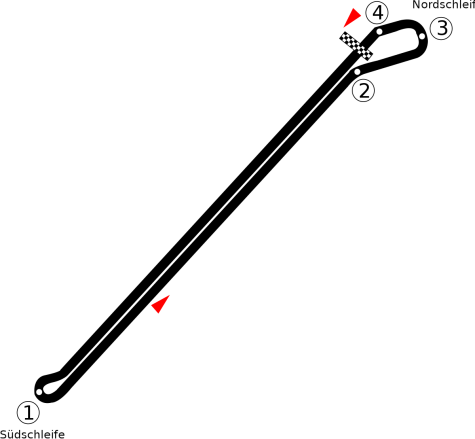 bizarre F1 track of all time. Comprised of two six-mile long straightaways, each followed by a hairpin corner, this track had banking steeper than the turns at Daytona and Indianapolis combined. It hosted races from 1921 until 1998, and was closed due to mounting traffic problems that rose after the fall of the Berlin Wall. Only one Formula 1 Grand Prix was held there, in 1959. Today, the remaining portions of the track make up part of the Bundesautobahn 115 highway.
bizarre F1 track of all time. Comprised of two six-mile long straightaways, each followed by a hairpin corner, this track had banking steeper than the turns at Daytona and Indianapolis combined. It hosted races from 1921 until 1998, and was closed due to mounting traffic problems that rose after the fall of the Berlin Wall. Only one Formula 1 Grand Prix was held there, in 1959. Today, the remaining portions of the track make up part of the Bundesautobahn 115 highway.

